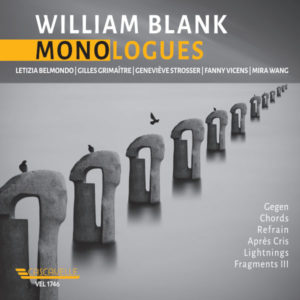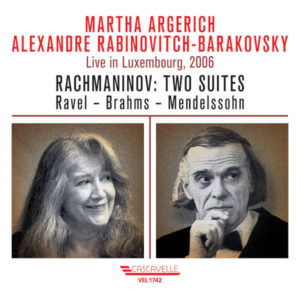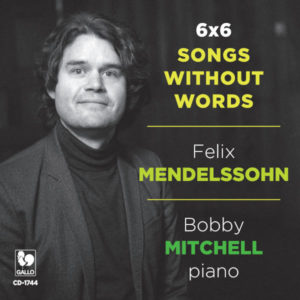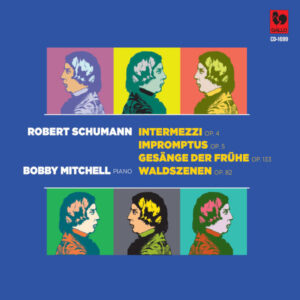Extraits / Excerpts
FRANZ LISZT – PINUCCIA GIARMANÀ – ALESSANDRO LUCCHETTI, PIANO FOUR HANDS
Franz LISZT :
Hungarian Rhapsody No. 2 for Piano four Hands, S. 244 – Gaudeamus Igitur for Piano four Hands, S. 240 – Fest-Polonaise for Piano four Hands, S. 230a (S. 528) – Weihnachtsbaum for Piano four Hands, S. 186.
Pinuccia Giarmanà & Alessandro Lucchetti, Piano.
The Christmas Tree by Liszt
On many occasions Bela Bartók complained of the complete lack of understanding surrounding many of Liszt’s works; he denounced the success which the lesser musically important but more striking pieces for the piano enjoyed as the main cause of the concealment of masterpieces from the evolution of modern musical language. He maintained that the “true meaning” of Liszt’s art lay in his later and less well known works. These were models of extraordinary innovation, boldness and harmonious research as well as the milestone for future musical progress. In this context they were more significant than the contributions of Strauss and Wagner who also were indebted to Liszt. As is well known Wagner declared that once he had heard Liszt’s work, “he acquired a different harmonious point of View”.
[show_more more=”Show more” less=”Show less”]
The Christmas Tree a suite of twelve passages divided into three volumes, certainly belongs to this group of works ad fully corresponds to the characteristics underlined by Bartók. It is an essential, harmoniously complex, bold work, completely free from virtuoso appearance. It was composed between 1874 and 1876, firstly for a piano solo and then transcribed for two part piano. The work is coeval or immediately prior to Liszt’s last great religious compositions. It shares the strong mystical emotion and compositional experimentation of the former which results in the recovery of Gregorian and diatonic modes within the tonal range rendered extraordinarily flexible and varied. In fact in the Albero di Natale , the frequency of indeterminateness and the harmonic ambiguity accompany the wise use of the modal score: this is seen clearly in O heilige Nacht , of which a version for Tenor, female choir and organ exists, the Christmas carol drawn from an ancient melody based on a Doric scale.
Beyond the almost ascetic renouncement of any form of instrumental theatricality or magniloquent expression, the suite surprises, because of its simplicity and nostalgic and the contemplative spirit which animates it. With very few means Liszt created a refined, ingenuous and fairy-like world: Schlummerlied, the lullaby in F sharp major has splendid suspended harmonies. There is also Scherzoso, which describes the progressive illumination of the tree, and Abendglocken, “Andante affettuoso” again with a modal flavour, evokes the austere and sacred sonority of the church bells. The collection closes with he almost pre-Bartokian barbaric rhythm of Hungarian Christmas (Ungarisch), and with the re-evocation of Chopin like mazurkas of Polish Christmas (Polnisch) .
In Liszt’s Christmas, the traditional distinguishing features of the religious festival are maintained when converted into sound, however at the same time they are dispersed and exalted in mysterious dream time and in magical and illusory infancy.
His is the Christmas of memory, (Ehemals “Old times”, is the title of the sweet Andante which precedes the majestic eloquence of Ungarisch), and of ritual amazement which renews itself immobile like the hypnotic melody of Carillon . I believe it is not just harmonic experimentation, (as Bartók correctly noted) which makes Liszt even more modern than Wagner, but it is also the overcoming of the romantic aesthetics itself as seen in the Christmas Tree . It seems in fact that although this work has the highly personalised and typically romantic recovery of popular melodies and festive songs from various European peoples, Liszt aspired to a kind of strongly pre-impressionist pictorial “objectivity”. Here the twelve passages are just as much four autonomous pictures which describe the suggestions and events of a real and symbolic Christmas.
As a contrast, the other passages recorded here show the more well known face of Liszt’s work for the piano. The Festpolonaise , an “Allegro pomposo” in E flat major, written in January 1884 during a visit to Tivoli is the only original four part composition for piano by Liszt. The Variation on the theme “Cotolette” cannot be included as it belongs to a collective piece of work in which Borodin and Rimsky-Korsakov also participated.
The Gaudeamus igitur and the Hungarian Rhapsody n°2 are however the transcriptions by Liszt himself of the Humoreske for male choir and orchestra, composed for the centenary of the Academic Concerts of Jena and the very famous work of the same name for piano solo, with the original key of C sharp minor changed to C minor.
Giulio Gattinara
[/show_more]
- Categories
- Composers
- Interprets
- Booklet












